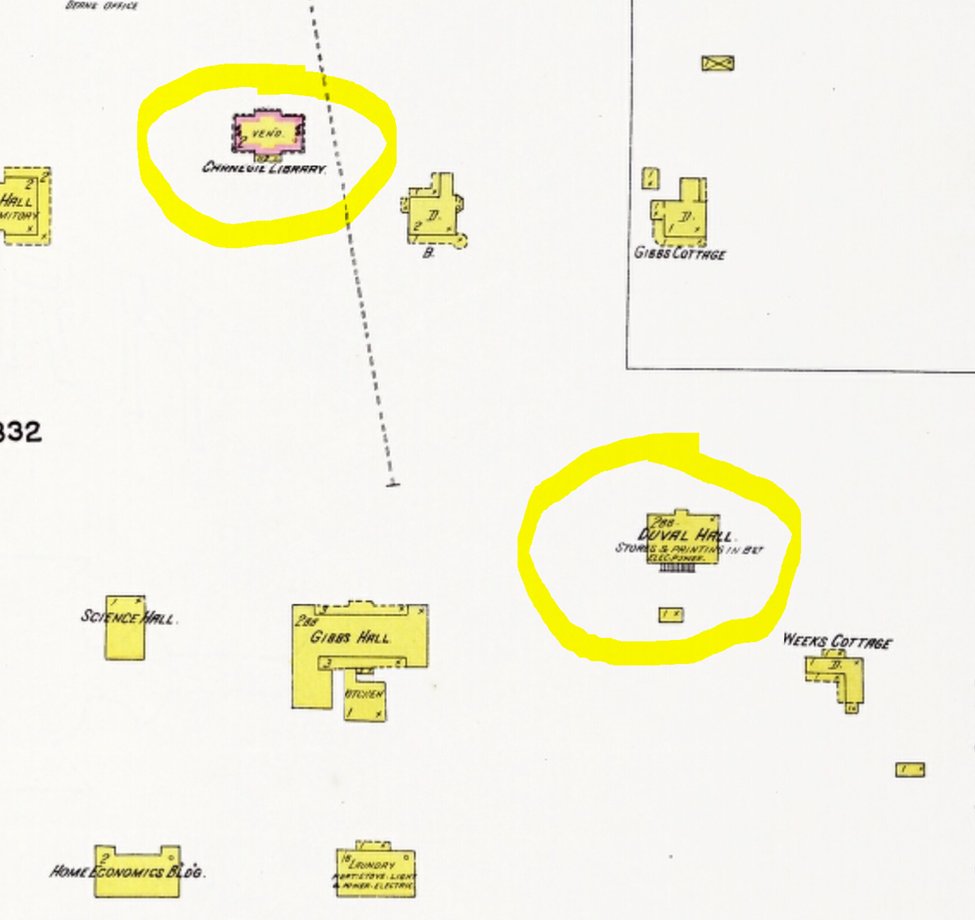What if I told you that this historic marker has a major error? That FAMU was NOT built on Governor W. P. Duval's plantation?
As one of the most important HBUs in the country, FAMU’s foundation story should be told accurately. This thread will do that. 1/
#FAMU #Tallahassee
As one of the most important HBUs in the country, FAMU’s foundation story should be told accurately. This thread will do that. 1/
#FAMU #Tallahassee

For decades, histories of FAMU have stated that the land was once part of William P. Duval’s plantation. This @TDOnline article even has a photo of what was supposedly Duval's house. But this is far from the only example to make this error. So where did Duval actually live? 2/ 

William Pope Duval was appointed Fla’s Territorial Governor in 1822. After Tallahassee was selected as the the capital, Duval chose one of the finest spots in town for his residence. It was located on the crest of a hill above a seep spring in what is today Myers Park. 3/ 

One of Duval’s neighbors was Lizzie Brown, who moved to TLH about 1828. In her memoirs she describes Duval’s house as overlooking the waterfall in what is today Cascades Park. The spring she mentions was later dammed and used for TLH's water supply, but that’s another story. 4/ 

So where did the info about FAMU being located on Duval’s plantation come from? Most likely the 1939 WPA Guide to Fla, which says that FAMU's Carnegie Library was built on the site of Duval’s house after it burned in 1905. From then on, this error will be repeated. 5/
#FAMU
#FAMU

Even the National Register of Historic Places listing for FAMU's Carnegie Library states it was built on the site of “Duval Hall.” But Duval Hall was still standing after the Carnegie Library was built. In fact, both buildings are clearly shown on a 1916 map of campus.
6/
6/

If it wasn’t Duval’s house that burned down, whose was it? The Weekly True Democrat reported that on New Year’s Eve 1905, the “academic building” caught fire. Then it states: “In the good old days … the historic house was the home of the Walkers.” Who were the Walkers?
6/
6/

FAMU’s first president, Thomas DeSaille Tucker, provides another clue. In 1891 he wrote about the school relocating from College Hill (today’s FSU) to a former plantation high on a hill called “Highwood.” Students lived in the former manor house.
#FAMU
7/

#FAMU
7/


To sum: we now know the FAMU campus was established on a plantation called Highwood which was formerly the home of the Walker family. From here we can thank “The Red Hills of Florida,” for putting the pieces together. This was the plantation of George Keith Walker.
8/
8/

George K Walker was born in Kentucky in 1809. His father was a congressman. In 1834-1835, he served as the Territorial Secretary of Fla. In 1844 Walker bought 79 acres on a hill above TLH where he built a plantation house. This later became the core of the FAMU campus.
9/
#FAMU
9/
#FAMU

Highwood Plantation was only one of many large estates owned by George Walker. A family record of births shows some of his children were born in TLH, some in Quincy, or at Bel-Air, a resort south of Tallahassee. Several died in childhood.
10/
10/

As with nearly all other large landholders in the Red Hills region, George Walker’s wealth was built upon slavery. An 1850 census schedule shows he owned 11 enslaved people. But he also kept a plantation in the Quincy area that was home to 75 enslaved people in 1860.
11/

11/


One of the slaves, "Edmund" had been a companion of George Walker's for his entire life. After the Civil War, Walker's health declined rapidly, and in June 1866 he made out his will, asking that his family provide for Edmund. George Walker died two months later.
12/

12/


After Walker's death, the family sold Highwood Plantation to Sarah F. Porter. She is shown as the owner of what became the FAMU campus on an 1883 map of Leon County.
12/
#FAMU

12/
#FAMU


In 1890, the Morrill Act established a land-grant university system of historically black colleges. The funds were used to acquire George K Walker's former plantation (since sold to Sarah Porter) as the site for what became FAMU. Walker's house is at center in this engraving.
13/
13/

George K. Walker is buried in Tallahassee in St. Johns Episcopal Cemetery. As mentioned at the start of this thread, the historical marker for FAMU incorrectly identifies W. P. Duval, rather than Walker, as the owner of the plantation where the FAMU campus stands today.
14/
#FAMU
14/
#FAMU

As a footnote, George Walker's brother, David, was elected governor of Florida immediately after the Civil War, serving from 1865-1868. David Walker later donated land for what became the Walker Library, today the home of the 1903 Bar on Park Avenue.
END
END

• • •
Missing some Tweet in this thread? You can try to
force a refresh












